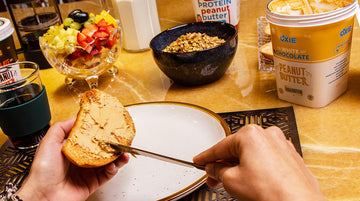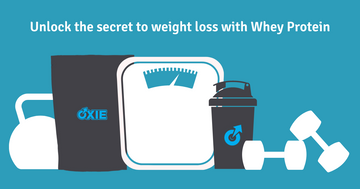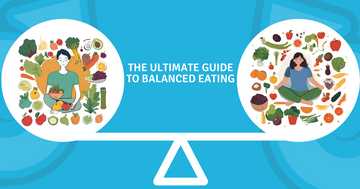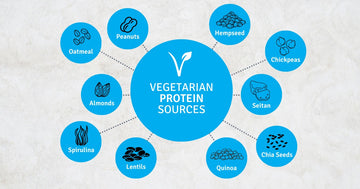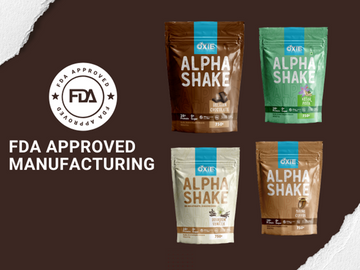Peanut butter is a spread made from ground, roasted peanuts. It is typically sold in jars and is a popular ingredient in sandwiches, baking, and cooking. Peanut butter is a source of protein, healthy fats, fibre, vitamins, and minerals. It can be a nutritious part of a balanced diet when consumed in moderation.
Additionally, it is often used as a calorie-dense food for people who want to gain weight, and has been shown to help control hunger, making it a good option for people looking to maintain a healthy weight.
Peanut Butter Health Benefits and What Peanut Butter Does to Your Body
Peanut butter can have several positive effects on the body when consumed in moderation as part of a balanced diet. Some of the ways that peanut butter can affect the body include:
- Promoting heart health: Peanut butter contains monounsaturated and polyunsaturated fats, which can help to lower cholesterol levels and reduce the risk of heart
- Building and repairing muscle: The protein in peanut butter can help build and repair muscle tissue, making it a good option for athletes and active
- Supporting weight management: The combination of protein, fibre and healthy fats in peanut butter can help control hunger and promote feelings of fullness, potentially aiding in weight management by reducing overall calorie
- Boosting energy: Peanut butter is a good source of carbohydrates and protein, which can help to provide a sustained energy boost.
- Promoting healthy skin and hair: Peanut butter is a good source of biotin, a B vitamin that is important for the health of hair, skin, and nails.
- Supporting muscle and bone health: Peanut butter is high in magnesium, a mineral that is essential for muscle and bone
- Improving digestion: Peanut butter is a good source of fibre, which can help to promote regular bowel movements and support a healthy digestive
It is important to note that peanut butter can be high in calories and saturated fat, so it should be consumed in moderation as part of a balanced diet. Additionally, people with peanut allergies should avoid consuming peanut butter.
Where Peanut Butter Comes From
Peanut butter is made from ground, roasted peanuts. Peanuts, also known as groundnuts, are a legume crop that is native to South America. They were first brought to Africa by the Portuguese and then to North America. Today, the largest commercial producers of peanuts include China, India, Nigeria, and the United States.
The process of making peanut butter begins with the harvesting of peanuts. The peanuts are then cleaned, roasted, and blanched to remove the outer skin. The roasted peanuts are then ground into a paste, and ingredients such as salt and sugar may be added for flavour. The peanut paste is then packaged and sold as peanut butter.
There are different types of peanut butter available, including smooth or chunky, and with or without added sugar and hydrogenated oils. Some brands also offer natural or organic options, which are made with less processed ingredients.
How Peanut Butter Is Made
Peanut butter is made by grinding roasted peanuts into a smooth paste. The process typically involves the following steps:
- Harvesting: Peanuts are harvested from the field when they are fully
- Cleaning: The peanuts are cleaned to remove dirt and
- Roasting: The peanuts are roasted to enhance their flavour and to make them easier to The roasting temperature and time vary depending on the desired flavour and texture.
- Blanching: The roasted peanuts are then blanched, which removes the outer
- Grinding: The roasted and blanched peanuts are ground into a paste using a specialized machine called a peanut butter grinder. The grinding process may take several minutes to ensure a smooth, consistent
- Mixing: Salt, sugar, and other ingredients such as hydrogenated oils may be added to the peanut paste to enhance the flavour and texture.
- Packaging: The peanut butter is then packaged and sold in jars or
It is important to note that some brands of peanut butter may use different methods or ingredients, and some natural or organic options may be made with less processed ingredients. The type of peanut butter and the ingredients used can affect its flavor, texture, and nutritional value.
When to Consume Peanut Butter ?
Peanut butter can be eaten at any time as a snack or ingredient in various dishes. It is a popular spread on toast, sandwiches, and can be used in baking and cooking as well. Some people prefer to eat it with fruits like apples and bananas, while others enjoy it as a dip for crackers or celery.
It's also an ingredient in some energy bars and protein bars as well. It is important to check the label for added sugar or hydrogenated oils, as some brands can have a high quantity of these added ingredients.
Will Peanut Butter Help You Gain Weight ?
Peanut butter can be a healthy addition to a weight-gain diet, as it is high in calories and protein, and can also provide healthy fats. However, it should be consumed in moderation as part of a balanced diet. One serving size, which is typically 2 tablespoons, contains around 190-200 calories and 16 grams of fat. Consuming too much peanut butter can lead to weight gain if it causes you to exceed your daily calorie needs.
It's important to note that weight gain is the result of consuming more calories than your body burns. If you're looking to gain weight, you'll need to increase your calorie intake. Eating peanut butter can be a convenient way to add extra calories to your diet, but it shouldn't be the only source of calories. It's best to consume a balanced diet that includes a variety of nutrient-dense foods from all food groups.
Additionally, it's important to not replace nutrient dense food with high calorie food like peanut butter. It should be consumed in addition to a balanced diet rather than replacing the nutrient dense food.
Peanut Butter Vs Chocolate Peanut Butter
Peanut butter and chocolate peanut butter are both popular spreads, but they have some differences.
Regular peanut butter is made from roasted peanuts that are ground into a paste. It typically contains peanuts, salt, and sometimes a sweetener such as sugar or honey. It is a good source of protein, healthy fats, and some vitamins and minerals.
Chocolate peanut butter, on the other hand, is a combination of regular peanut butter and chocolate. It typically contains peanuts, cocoa powder, sugar, and other ingredients such as milk, butter, or palm oil. It has a sweeter taste and a chocolaty flavour.
In terms of nutrition, chocolate peanut butter is higher in sugar and calories compared to regular peanut butter, due to the added chocolate. However, it still provides some of the same nutrients as regular peanut butter, including protein and healthy fats.
Ultimately, it is up to personal preference whether you prefer regular peanut butter or chocolate peanut butter. Both can be part of a healthy diet in moderation, but it is important to check the ingredient list and nutritional information when choosing a brand, as some brands may have added sugar, salt or other processed ingredients.
Peanut Butter Vs Whey Protein
Peanut butter and whey protein are two different types of foods that have completely different nutritional profiles and uses.
Peanut butter is a spread made from ground, roasted peanuts. It is high in calories and fat, and also provides protein, fibre, and some vitamins and minerals. It can be used as a spread on toast, sandwiches, or crackers, or as an ingredient in baking and cooking. Peanut butter is also a good source of healthy fats, particularly monounsaturated and polyunsaturated fats.
Whey protein, on the other hand, is a supplement made from the liquid part of milk that is left over after the solid curds have been removed. It is a complete protein, meaning it contains all of the essential amino acids, and is also high in branched-chain amino acids (BCAAs), which are important
for muscle growth and recovery. It is often used as a supplement by athletes and bodybuilders to help increase muscle mass, but also can be consumed by anyone who wants to increase their protein intake.
While both Peanut butter and whey protein can be part of a healthy diet, they have different uses and nutritional profiles. Peanut butter is a good source of healthy fats and can be used as a spread or ingredient in cooking and baking, while whey protein is a supplement that can be used to increase muscle mass and protein intake.
Peanut Butter Vs Nutella
Peanut butter and Nutella are both popular spreads, but they have some significant differences in terms of their ingredients and nutritional profile.
Peanut butter is made from roasted peanuts that are ground into a paste. It typically contains peanuts, salt, and sometimes a sweetener such as sugar or honey. It is a good source of protein, healthy fats, and some vitamins and minerals. Peanut butter has a savoury taste and can be used in a variety of ways, such as a spread on toast, sandwiches, or crackers, or as an ingredient in baking and cooking.
Nutella, on the other hand, is a chocolate-hazelnut spread made from a blend of hazelnuts, cocoa powder, skimmed milk powder, sugar, vegetable oil, and cocoa butter. It has a sweeter taste than peanut butter and is often used as a spread on toast, crackers, or fruits.
In terms of nutrition, Nutella is way higher in sugar and calories compared to peanut butter, due to the
added sugar and cocoa powder. Nutella also contains a lot less protein and healthy fats than peanut butter. Additionally, Nutella utilizes palm oil as a binding agent which is a type of saturated fat that can be harmful to
health when consumed in large amounts.
Ultimately, it is up to personal preference whether you prefer Peanut Butter or Nutella, but it is important to check the ingredient list and nutritional information when choosing a brand. Peanut butter can be a healthier option as it contains more protein and healthy fats, while Nutella is higher in sugar and calories and contains less protein and healthy fats.
Peanut Butter Vs Egg
Peanut butter and eggs are both foods that are high in protein and can be part of a healthy diet, but they have different nutritional profiles and uses.
Peanut butter is a spread made from ground, roasted peanuts. It is high in calories and fat, and also provides protein, fibre, and some vitamins and minerals. It can be used as a spread on toast, sandwiches, or crackers, or as an ingredient in baking and cooking. Peanut butter is also a good source of healthy fats, particularly monounsaturated and polyunsaturated fats.
Eggs, on the other hand, are a natural source of high-quality protein, vitamins, minerals, and healthy
fats. They are also versatile and can be cooked in many different ways, such as scrambled, fried, boiled, or baked. Eggs are considered to be a complete protein, meaning they contain all the essential amino acids that the body needs.
In terms of nutrition, eggs are lower in calories and fat than peanut butter, and are a good source of many essential vitamins and minerals such as vitamin D, B12 and choline. Peanut butter is also a good source of protein, but it's higher in calories and fat than eggs.
Ultimately, both peanut butter and eggs can be part of a healthy diet, but they have different nutritional profiles and uses. Peanut butter is a good source of healthy fats and can be used as a spread or ingredient in cooking and baking, while eggs are a natural source of high-quality protein and essential vitamins and minerals.
Peanut Butter Vs Butter
Peanut butter and butter are both spreads that are commonly used in cooking and baking, but they have some significant differences in terms of their ingredients and nutritional profile.
Peanut butter is made from roasted peanuts that are ground into a paste. It typically contains peanuts, salt, and sometimes a sweetener such as sugar or honey. It is a good source of protein, healthy fats, and some vitamins and minerals. Peanut butter has a savoury taste and can be used in a variety of ways, such as a spread on toast, sandwiches, or crackers, or as an ingredient in baking and cooking.
Butter, on the other hand, is made from cream and typically contains milk fat, salt, and sometimes other ingredients such as flavorings or colorings. It is high in calories, fat, and cholesterol and it's mostly used for cooking and baking.
In terms of nutrition, butter is higher in calories, saturated fat and cholesterol compared to peanut butter. Peanut butter is a good source of healthy fats and protein, while butter is mostly made of saturated fat which can be harmful to health if consumed in large amounts.
It's important to keep in mind that both spreads should be consumed in moderation. Peanut butter can be a healthier option as it contains more protein and healthy fats, while butter is higher in calories, saturated fat, and cholesterol.
Peanut Butter's Uses
Some common uses for peanut butter include:
- Spread on toast, sandwiches, or crackers: Peanut butter can be spread on bread or crackers as a simple and convenient snack or lunch
- Baking and cooking: Peanut butter can be used as an ingredient in baking and cooking, such as in cookies, brownies, and It can also be used as a base for sauces and marinades.
- Smoothies and shakes: Peanut butter can be added to smoothies and shakes as a natural thickener while also providing added flavour and nutrition.
- Peanut butter and jelly sandwiches: A classic and well-known use of peanut butter is in combination with jelly or honey in a sandwich.
- Snack bars and energy balls: Peanut butter is a popular ingredient in homemade snack bars and energy balls, which can be a great option for a healthy snack on the
- Protein bars: Peanut butter is also used as an ingredient in protein bars to provide a source of protein and healthy fats.
- Dips: Peanut butter can be used as a base for dips and spreads, such as in Thai-style peanut
Overall, peanut butter is a versatile food that can be used in a variety of ways to add flavour and nutrition to meals and snacks.
How Does Peanut Butter Taste ?
Peanut butter has a distinct, savoury taste that is characteristic of peanuts. It is slightly sweet and has a rich, nutty flavour. The texture of peanut butter can vary, depending on the brand and type. Some peanut butters are smooth and creamy, while others are chunkier with visible pieces of peanuts.
The taste of peanut butter can also depend on the ingredients used. Natural peanut butter is made from ground peanuts and may have a more intense peanut flavour, while other types of peanut butter may have added ingredients such as sugar or salt, which can change the taste.
Some people may also detect a slightly bitter aftertaste in peanut butter, which is normal and comes from the natural oils found in peanuts.
Overall, the taste of peanut butter is a savoury and nutty, slightly sweet and can be enjoyed in a variety of ways. Some people enjoy it on its own, while others prefer to use it as an ingredient in cooking or baking. Peanut butter is a food that has a lot of variation in taste depending on the type of peanut butter and the ingredients added to it.
Peanut Butter Without Hydrogenated Oil
Hydrogenated oil is a type of oil that has been chemically treated to make it more solid at room temperature. Some peanut butters contain hydrogenated oils as an ingredient in order to maintain a smooth and spreadable consistency. However, these oils contain trans fats, which have been linked to an increased risk of heart disease.
To avoid hydrogenated oils in peanut butter, you can look for "natural" peanut butter that is made with only peanuts and salt (or perhaps a small amount of sweetener) as ingredients. These types of peanut butter may have a more natural and slightly gritty texture that may require stirring before use.
Also, you can check the label of the product, where it should be clearly mentioned if the peanut butter contains hydrogenated oil or not.
It's worth noting that the FDA allows food manufacturers to list "0 grams trans-fat" on the label if the product contains less than 0.5 grams per serving. Therefore, it's important to check the ingredient list for hydrogenated or partially hydrogenated oils, which are the main sources of trans fats.

